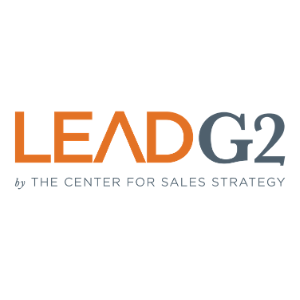Lead Nurturing Email Workflows to Use During the Buyer’s Journey
Having a well-thought-out strategy for engaging and converting potential buyers is imperative for businesses. That's where lead nurturing email...
3 min read
 LeadG2
:
March 10, 2021
LeadG2
:
March 10, 2021

Salespeople and marketers often focus on the sales process to track a commitment. Different labels are put on selling steps, but generally they are seen as: identify, connect, discover, advise, and close. (Read more about our recommended sales process.)
What can be forgotten—and shouldn't be—is that a prospect is also going through a buying process, their buyer's journey, in sync with your efforts to sell.
As a consultative salesperson, you should demonstrate how the investment in your product or service is of value to the needs and benefit of the business of the client, rather than a purchase from the lowest-cost provider. The more you understand the dimensions of buying decisions and the possible motives behind them, the more value you will be able to demonstrate to the prospect.
We buy numerous things that are not sold to us. We buy on our own initiative to satisfy our need, and we buy almost without thinking. However, when something is being sold to us, we do think, and our prospects do the same. We must first approach the prospect with the understanding that we are an unknown entity and, therefore, there are going to be questions and natural doubts about the value of conducting business with us.
There are five buying decisions everyone makes when they are being sold to. These decisions always come into play even if the prospect is not fully conscious of them. Also, even if the buyer understands what elements are part of a decision, they are not always openly expressed.
By understanding the decisions they will make when dealing with you, the better off you are to get them to answer “yes” to each of the questions or to help you nurture them throughout the process.
The late Roy Chitwood, a former sales trainer, stressed in his book, World Class Selling, that the buying decisions always occur when you are selling, and they occur in a precise, psychological order:
About you, the salesperson
About your company
About your product or service
About the price/value
About the time to buy
The prospect’s first impression is not the product or service you sell, but you. The unspoken concerns revolve around:
Your integrity
Your judgment
When talking about your integrity, they are judging if they feel you are really interested in their success. Do you understand the needs of their business?
Judgment is whether you understand and can show how what you offer matches to the true needs and desires of the client. The more you understand your company, the market you serve, the market segment of the prospect and their potential customers and reflect that knowledge with credibility and confidence, the stronger position you are in to satisfy questions in the mind of the prospect.
In addition to liking and trusting you, the client has to believe in the credibility of your company. Much of this is established first by you. Still, the prospect wants to view the company as credible and trustworthy.
Their expectation may range from the level of assumed reliability (handle my order right) to trusted advisor as an integrated consultant that is a key part of their operations.
The prospect is not simply deciding if they want to buy from you. They want to decide, both emotionally and logically, “Does this product or service really meet my needs?”
The prospect is making a choice between you and two other options:
No action at all
Other alternatives
Other alternatives are not simply other companies that you would define as direct competitors. The buyer may be comparing the investment in your product or service to whether they want to spend a like amount of money on an additional staff member or a different capital purchase.
When a purchase is made by a larger organization, then the purchase is much more influenced by multiple people with different agendas and priorities beyond your main contact or the person you perceive as the "decision maker."
Regardless if selling to a company small or large, you have to provide a sufficient value to the customer’s business to be seen as a higher payoff than other choices.
Now the client is ready to consider price, but he or she looks at “affordability” as the value that will be returned for the investment.
The more credibility you have established on the first three buying decisions, the more the sale will be about value vs. lowest price. That is why it is imperative to avoid the “So what does it cost?” question until you have built as strong a foundation of value as possible.
This is more client-controlled, but if you have a legitimate reason for sooner timing, then the prospect deserves to hear it from you.
There may be time-sensitive aspects to your offer that necessitate a decision by the prospect. Examples: the end of an available tax credit that makes the purchase more cost effective, the end of an existing product line, or a pending non-negotiable price increase.
When sellers and marketers understand the decisions made during their buyer's journey, it not only helps the sellers in conversations with their prospects, it also helps marketers guide the content creation and sales enablement tools that can be used to generate more leads and even nurture leads.
Don't miss out on an opportunity to generate qualified leads and nurture qualified prospects because you don't know what decisions they're making and when they're making them. Take some time to get to know your target persona and fully grasp the reasoning behind their decisions so you and your product or services can help them fulfill the needs and desires they are seeking answers and solutions to.
Editor's Note: This blog was originally written in 2018 and has since been updated.

Having a well-thought-out strategy for engaging and converting potential buyers is imperative for businesses. That's where lead nurturing email...

Business-to-business (B2B) sales are often a long and complex process. As a salesperson, it’s important to understand the needs and motivations of...

For many businesses, the primary person that is focused on in both marketing and sales efforts is the key decision maker at a company. It’s easy for...